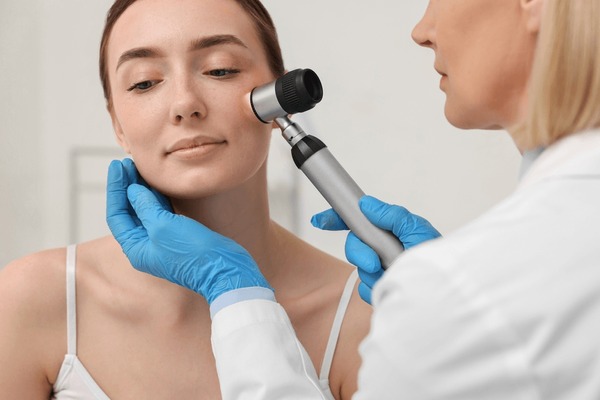Dermoscopy is one of the most advanced tools available for examining skin lesions and moles. Unlike a standard visual check, it allows specialists to see beneath the surface of the skin using magnification and polarized light. This deeper look reveals distinct patterns and structures that provide clues about whether a mole is benign or suspicious. In today’s world of preventive skin health, Dermoscopy Mole Evaluation in Dubai has become a trusted practice for ensuring early detection of abnormalities and maintaining peace of mind.
Understanding Dermoscopy Patterns
When examining a mole, dermoscopy highlights structures such as pigmentation networks, dots, streaks, and vascular arrangements. These features form recognizable patterns that dermatologists interpret. By analyzing these patterns, experts can distinguish between harmless moles, atypical moles, and malignant lesions.
Some of the most common dermoscopy patterns include:
- Pigment network – A grid-like pattern seen in normal moles; irregular networks may suggest malignancy.
- Dots and globules – Small pigmented spots; their distribution and color help identify risk levels.
- Streaks or radial lines – Can indicate abnormal growth, especially if uneven.
- Blue-white structures – Sometimes linked to melanoma when seen with irregular borders.
- Vascular patterns – Abnormal blood vessel arrangements often raise concern for skin cancer.
Why Patterns Matter in Diagnosis
Patterns are the “fingerprints” of moles. A regular, symmetrical pattern is usually a sign of a harmless mole, while irregular or chaotic patterns may signal atypical growth or melanoma. Dermoscopy allows these subtle differences to be recognized early, often before visible changes appear to the naked eye. This makes dermoscopy one of the most powerful tools for accurate mole assessment.
How Specialists Use Pattern Recognition
Experts trained in dermoscopy follow structured approaches such as the “ABCDE rule” (Asymmetry, Border, Color, Diameter, Evolving) alongside pattern recognition. By combining these strategies, dermatologists can make highly informed decisions about whether a mole is safe to monitor or requires further testing. This reduces the chances of both missed diagnoses and unnecessary procedures.
Benefits of Pattern Recognition in Mole Checks
The ability to identify and interpret dermoscopy patterns offers several benefits:
- Higher accuracy in detecting melanoma.
- Reduced need for unnecessary biopsies.
- Early detection of subtle abnormalities.
- Better long-term monitoring through mole mapping.
Who Can Benefit from Dermoscopy Pattern Checks?
Anyone can benefit from dermoscopy, but it is particularly useful for individuals who:
- Have numerous or atypical moles.
- Notice changes in mole appearance.
- Live in sunny climates like Dubai, where UV exposure is high.
- Have a family history of skin cancer.
By recognizing patterns early, patients can address potential issues long before they become serious.
The Importance of Dermoscopy in Dubai
In a region with strong sunlight throughout the year, Dubai residents are more exposed to UV damage, which can accelerate skin changes. Regular mole checks with dermoscopy provide reassurance and preventive protection. Understanding dermoscopy patterns empowers individuals to be proactive about skin health while relying on advanced diagnostic accuracy.
Final Thoughts
Dermoscopy patterns are critical indicators in mole evaluation, offering valuable insights into whether a mole is harmless or potentially dangerous. By revealing structures invisible to the naked eye, dermoscopy provides unmatched accuracy in detecting melanoma and other skin conditions. For those living in sun-intense climates, regular mole checks are not just a precaution—they are a necessity. With professional monitoring through Dermoscopy Mole Evaluation Dubai, individuals can protect their skin health, gain peace of mind, and ensure long-term wellness.





Comments